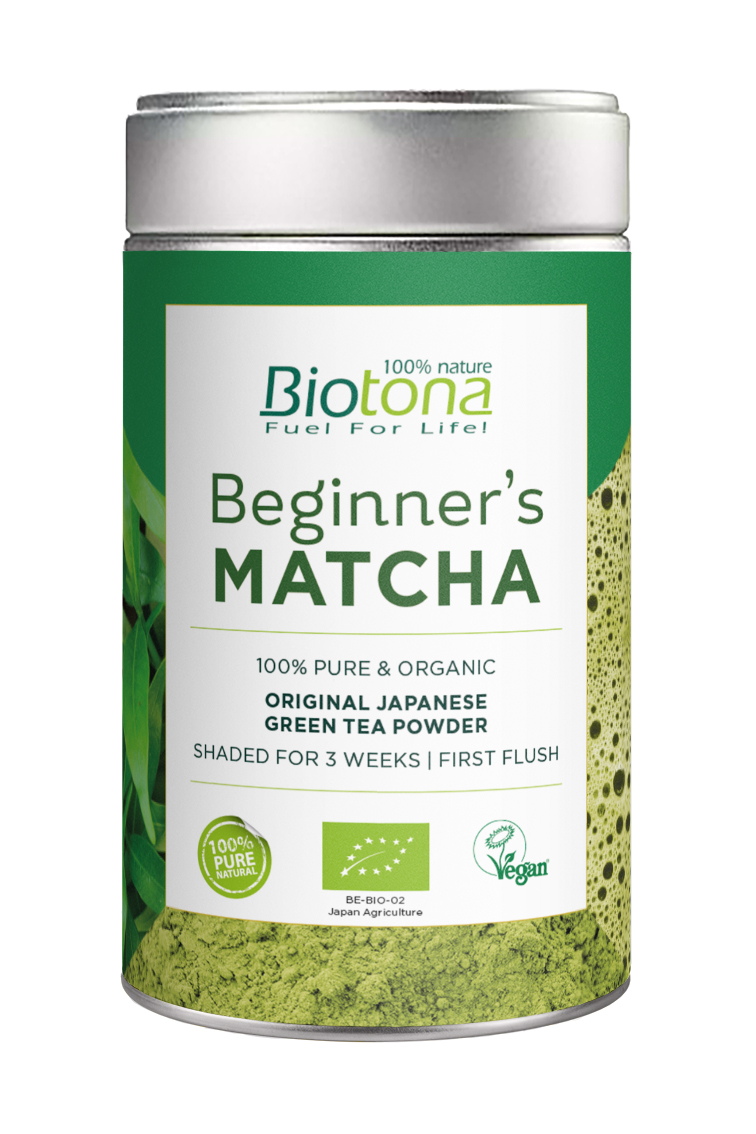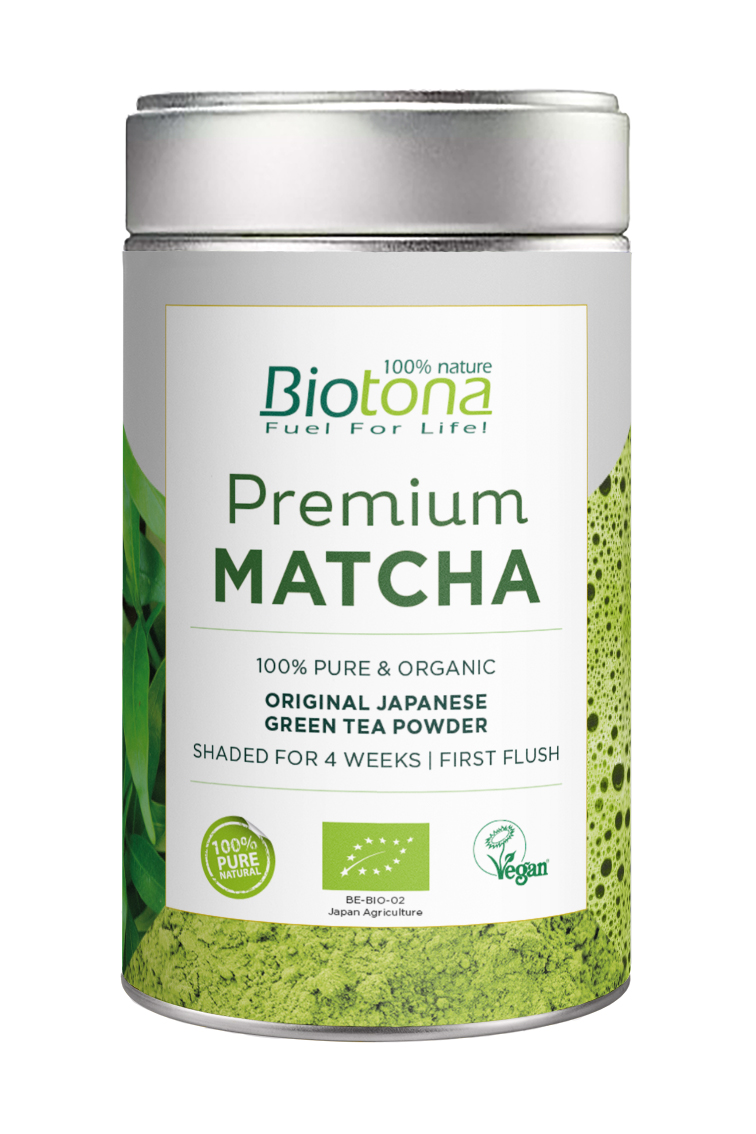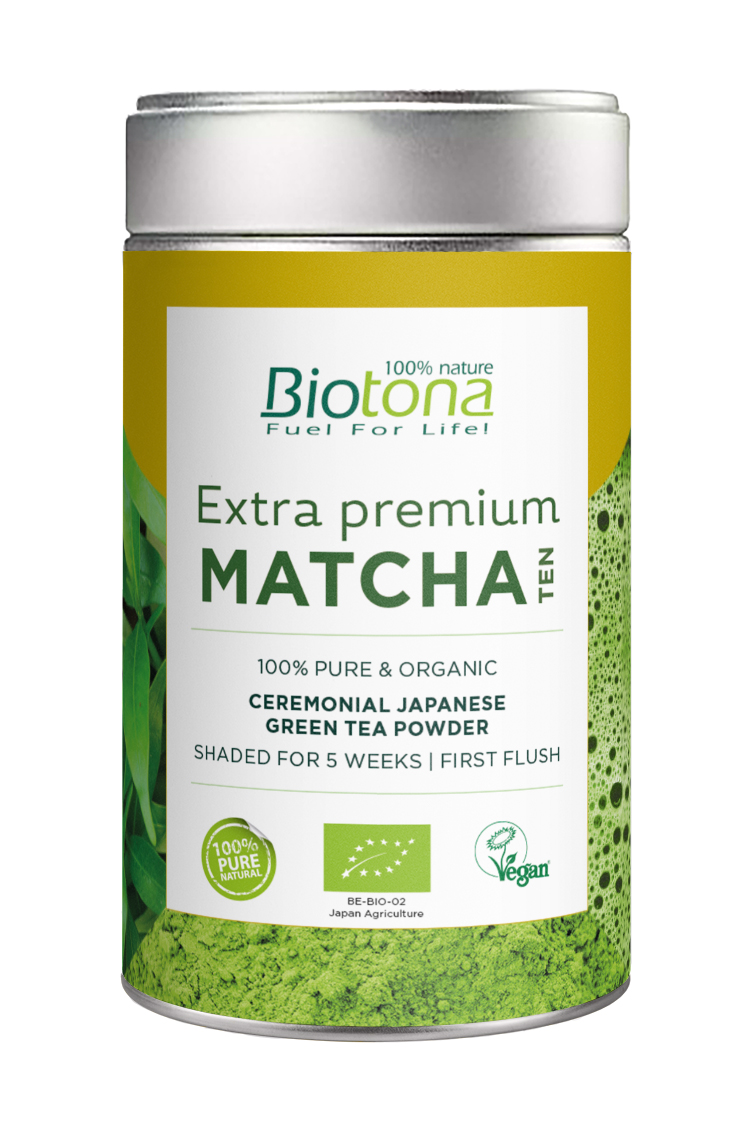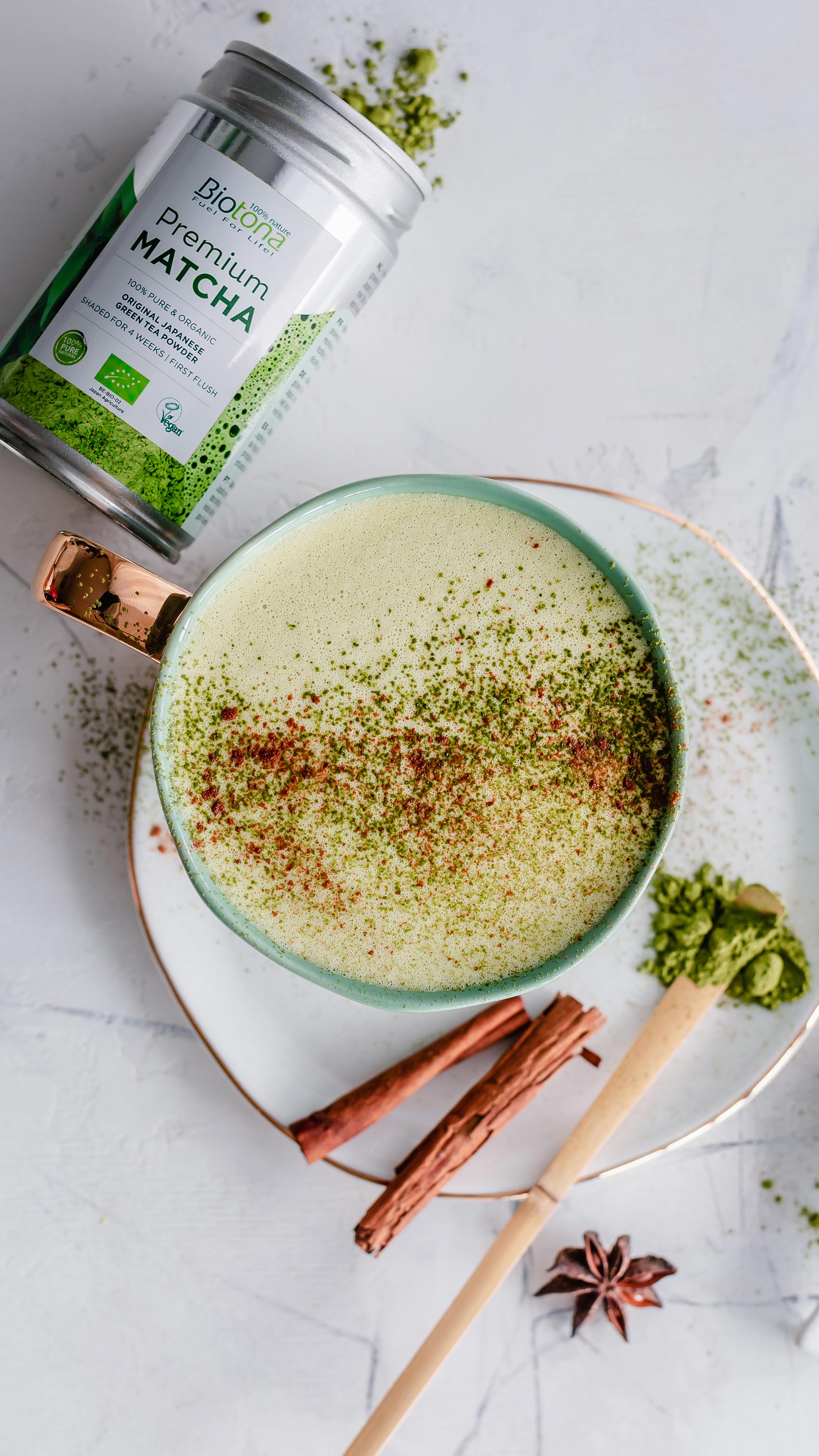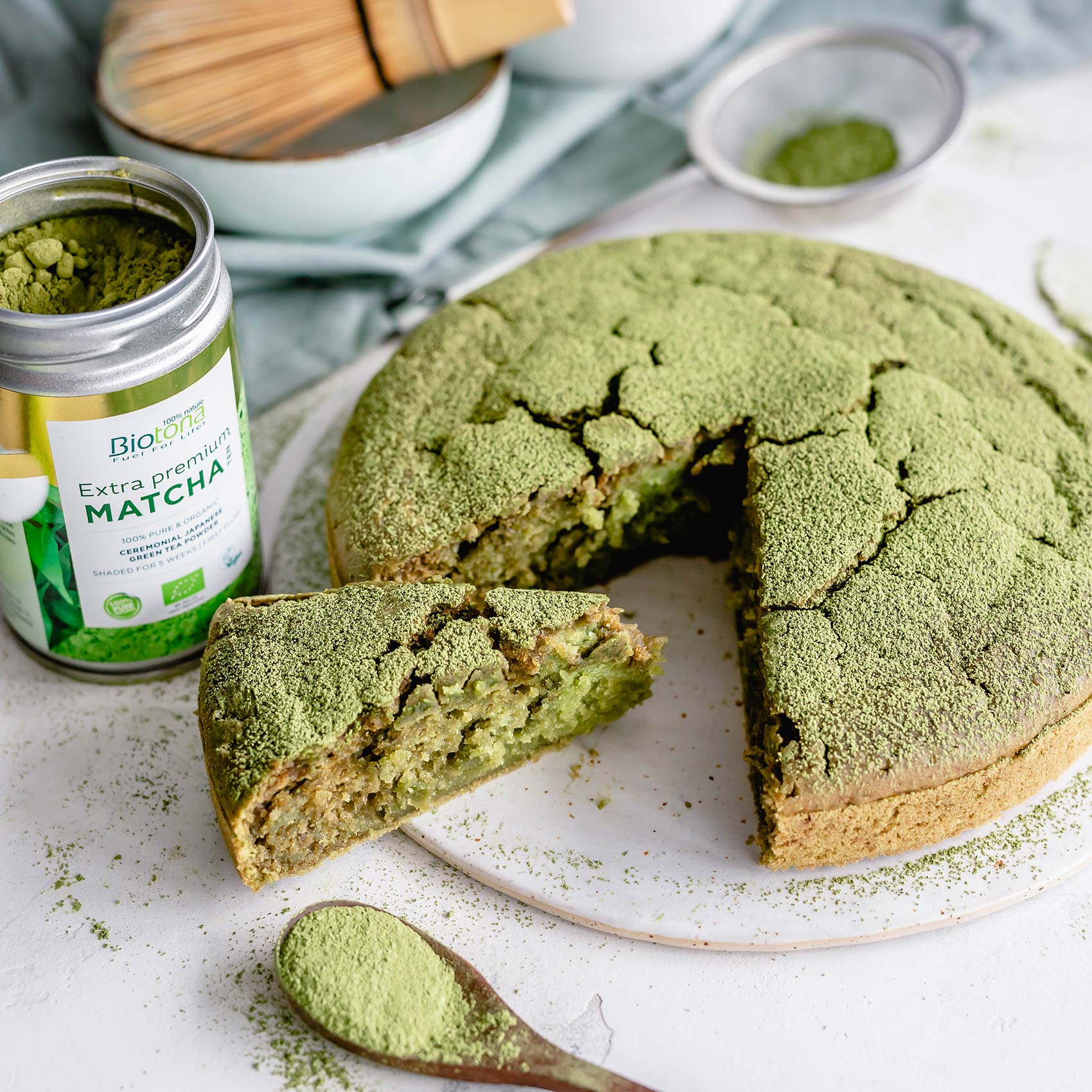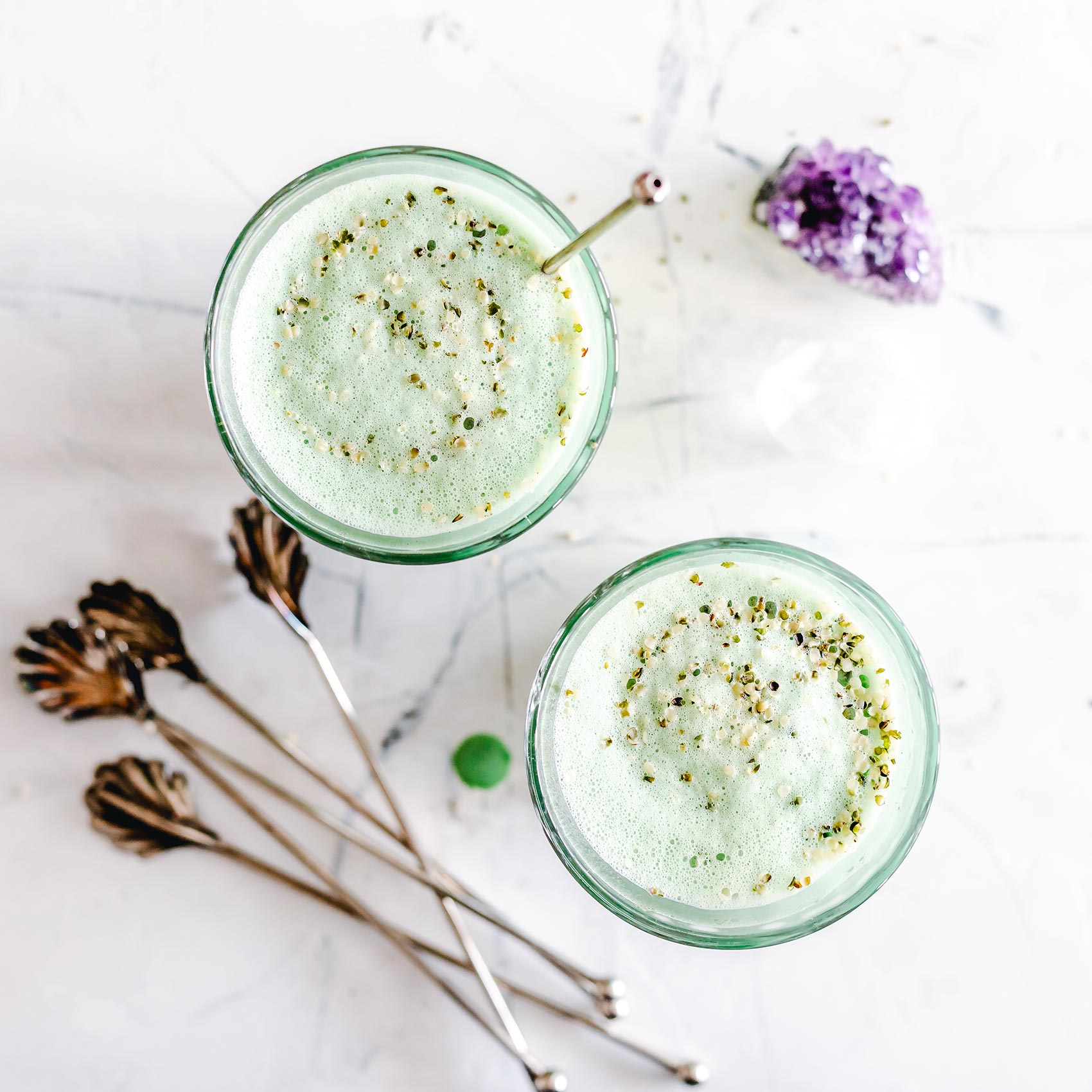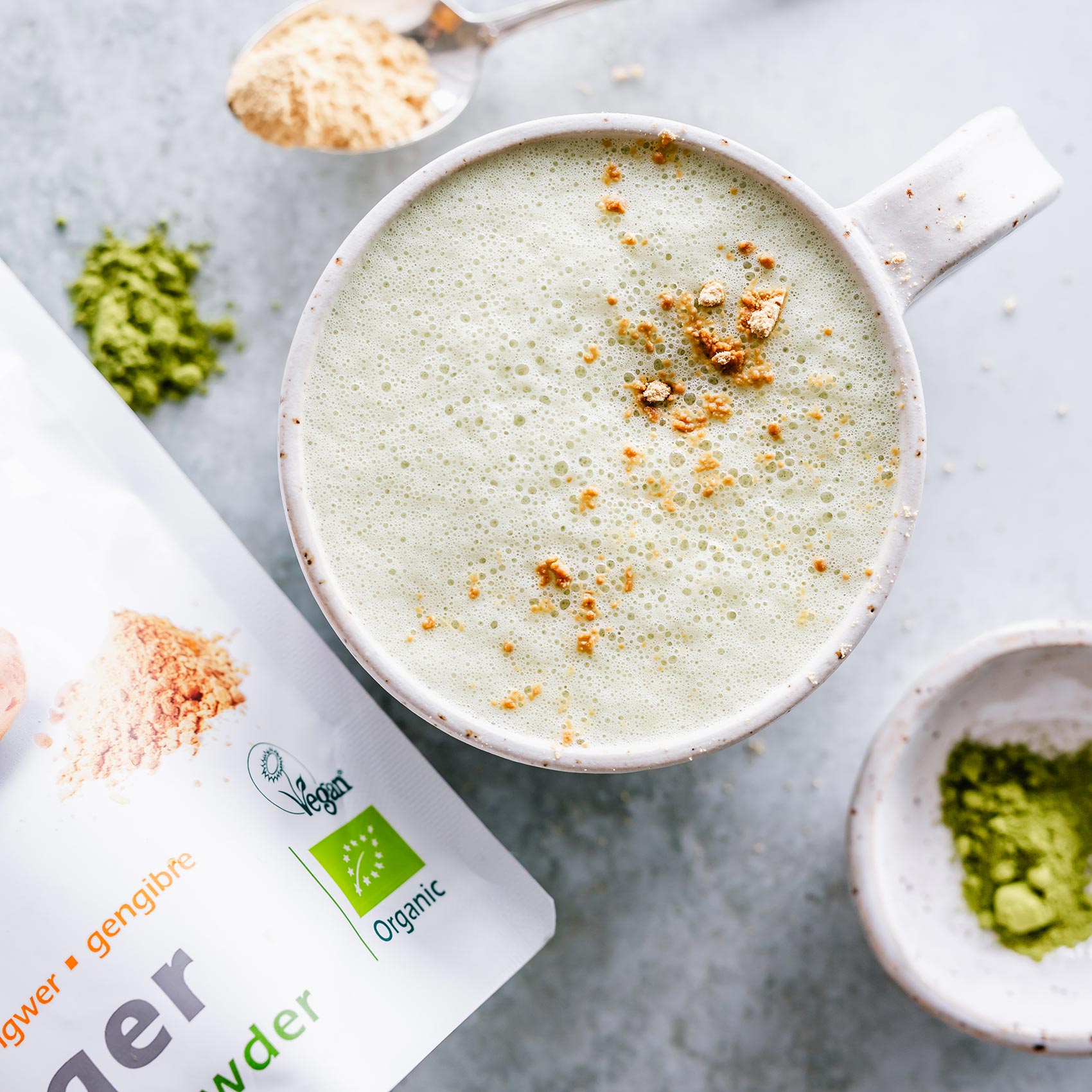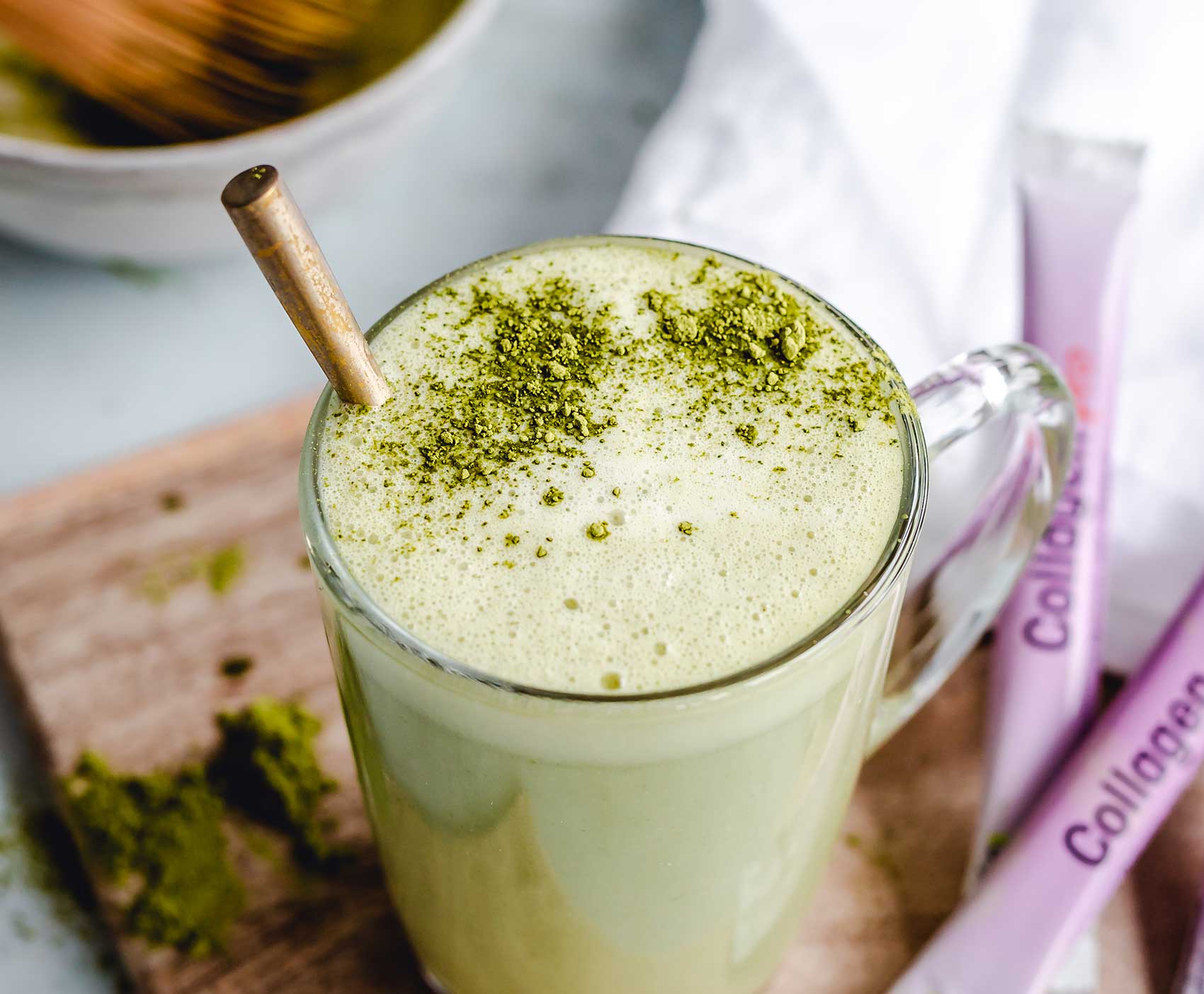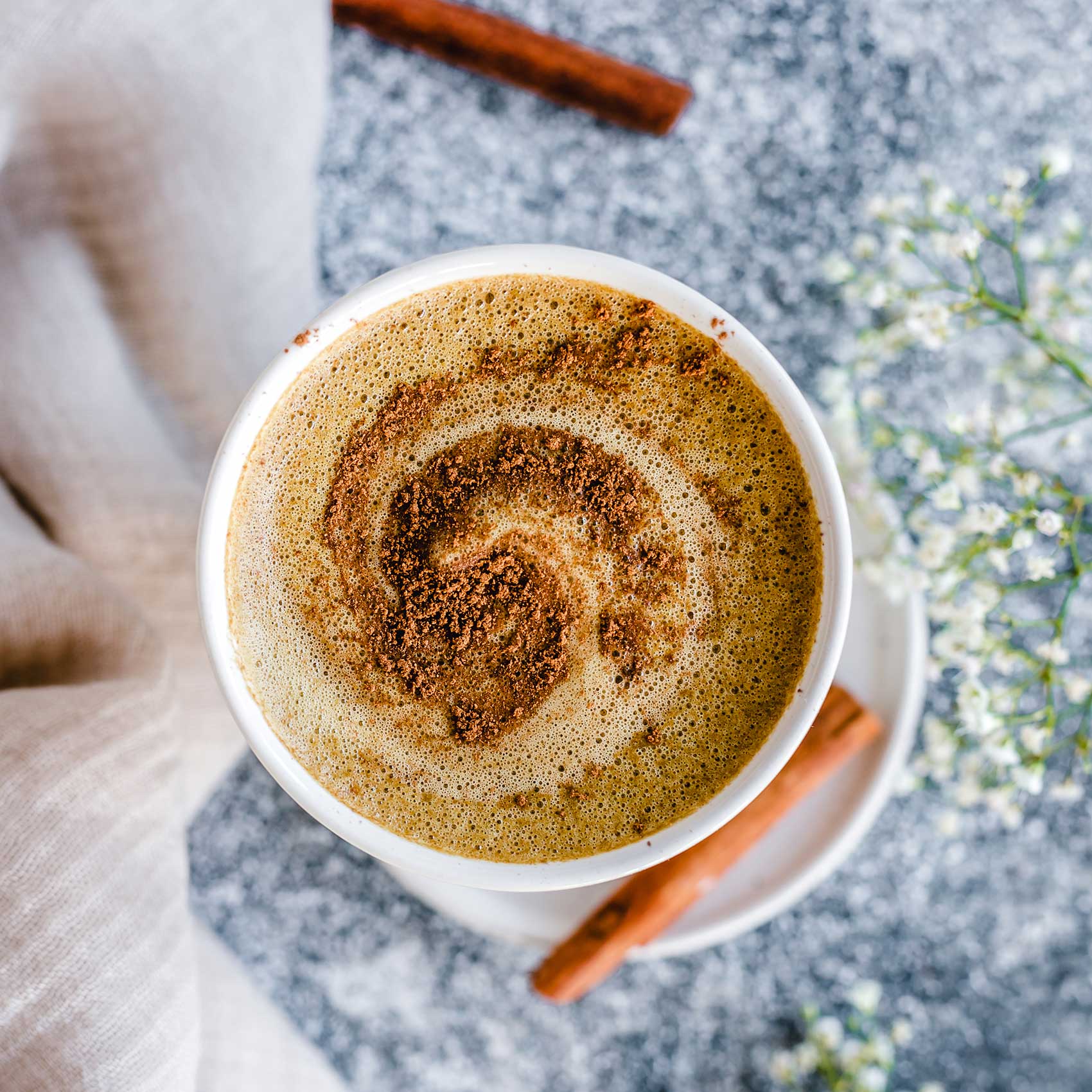What is matcha?
The drinking of a bowl of jade green matcha tea or a hip matcha latte is a healthy habit that has come to us from Japan – where matcha has been drunk for centuries. Matcha is an exceptional and refined tea of the very highest quality. It is bursting with health-giving components, which not only have an invigorating effect, but also support the body’s natural resistance and fat combustion.
What is matcha?
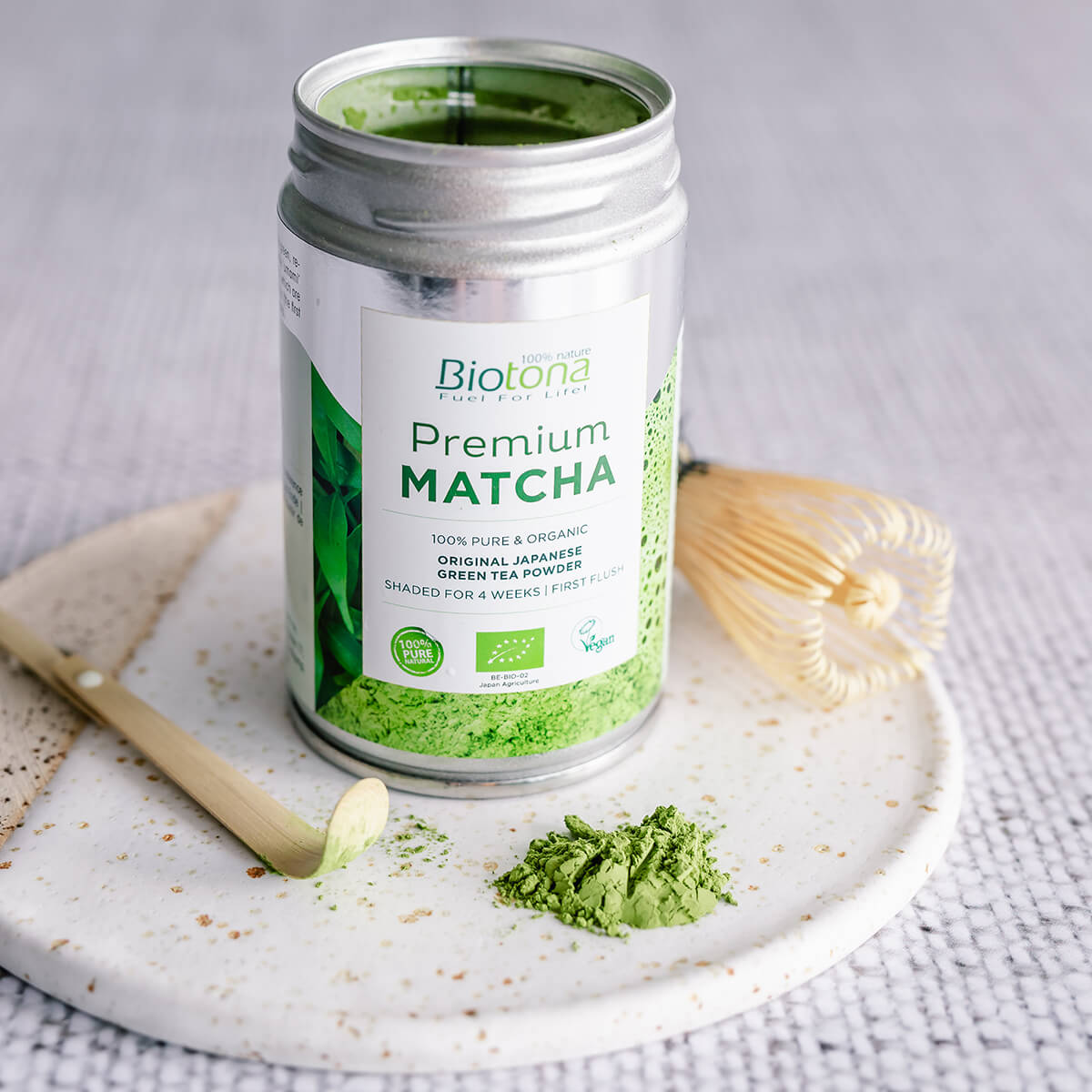
Matcha is a totally different product from ‘ordinary’ green tea. Instead of allowing the tea leaves to brew in hot water for a number of minutes, the powder of finely ground tea leaves is whisked immediately into the hot water. In this way, it is possible to enjoy the benefits of the healthy components in matcha to the maximum possible extent: up to fifteen times more than infused green tea.
In matcha of the very highest quality all the stems and veins are removed from the leaves before they are ground. This matcha is made exclusively from shaded, young leaves from the first harvest (in May). These leaves contain the highest concentrations of the health-giving nutrients. During the minimal processing of the matcha, every care is taken to ensure that these nutrients are maximally preserved.
How is matcha produced?
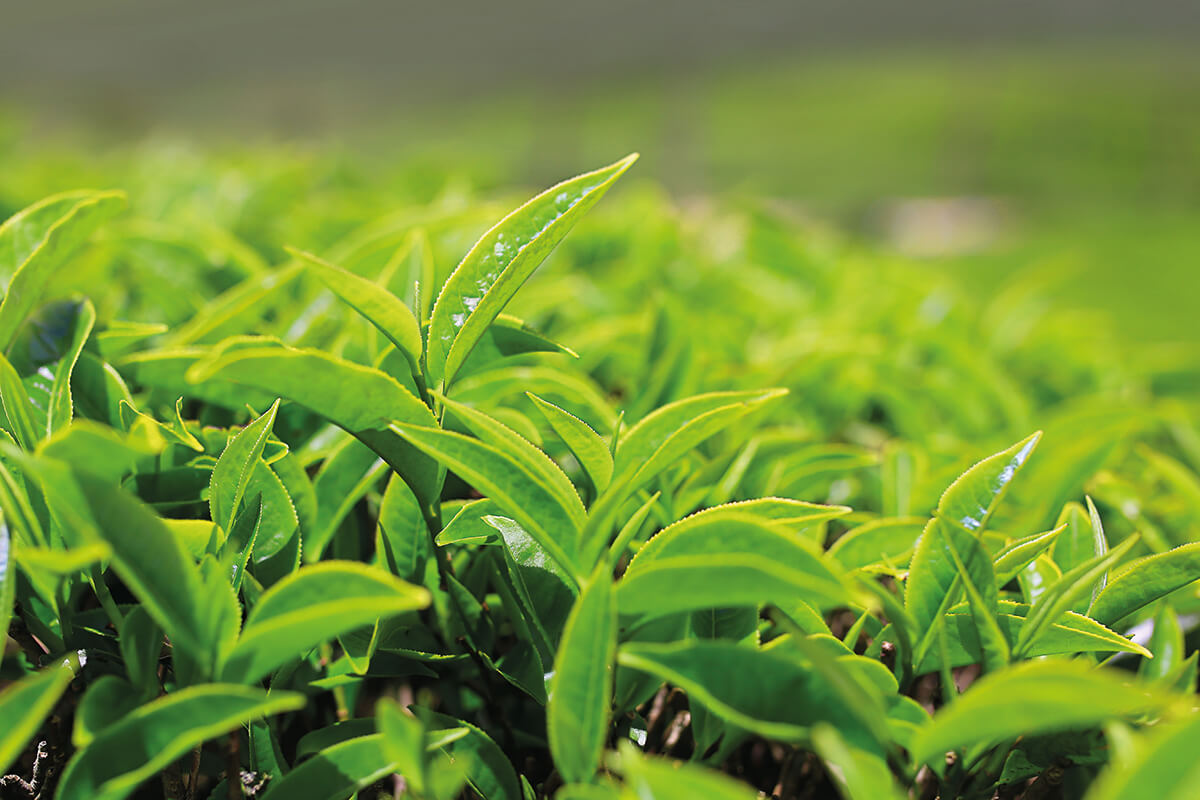
Real matcha comes from tea plantations in Japan that are situated at more than 500 metres above sea level. At this altitude, the tea plants can grow without being damaged by insects or disease. For three to five weeks before the leaves are harvested, the shrubs are shaded by large tarpaulins. To compensate for the lack of sunlight this causes, the leaves produce extra chlorophyll and amino acids.
Premium ‘shadow teas’ are not harvested by machine, but by hand. A bud and the top two tea leaves are removed from each branch. Depending on the length of the shading process, it is possible to distinguish different flavours and compositions.
Biotona Matcha products
Biotona Beginner’s Matcha
Is shaded for three weeks, is olive green in colour and has a lightly bitter flavour. This is the ideal tea for a first introduction to the joys of matcha. It is also well suited for use in the kitchen as an ingredient in cakes, ice-cream and smoothies.
Biotona Premium Matcha
Is shaded for four weeks, is jade green in colour, and has a mild and soft umami flavour. This tea is richer in L-theanine, theine and chlorophyll than Beginner’s Matcha. Premium Matcha is ideal for daily use.
Biotona Extra Premium Matcha
Is shaded for no fewer than five weeks and is a fresh, spring-green colour. This tea is richer again in L-theanine, theine and chlorophyll than Premium Matcha. The flavour is rich, fruity, sweet and intensely umami – for the true matcha connoisseur!
How do you prepare matcha?
Preparing matcha in Japan is much more than just ‘making a cup of tea’. It is a ritual in its own right, involving tea ceremonies that are known as Chado, which literally means ‘the way of the tea’. The fundamental principles of harmony, respect, purity and calm are all central to these ceremonies.
↪ Read everything about tea ceremonies
Every country has its own way of preparing and drinking tea, but they all have one thing in common: they offer a moment of pure pleasure. Why not try preparing matcha in the manner of the traditional Japanese tea ceremony, using the following recipe:
- Bring soft (calcium-free) and pure water* to the boil and then allow it to cool to a temperature of roughly 80°C.
- Put 1 gram of tea powder (½ teaspoon) in a bowl and pour in roughly 100 millilitres (70 – 100 ml) of the hot water.
- Beat the tea for fifteen or so seconds with a special bamboo whisk, until it has a nice, creamy foam on top and all the powder is dissolved.
- Enjoy the exceptional flavour and invigorating effect!
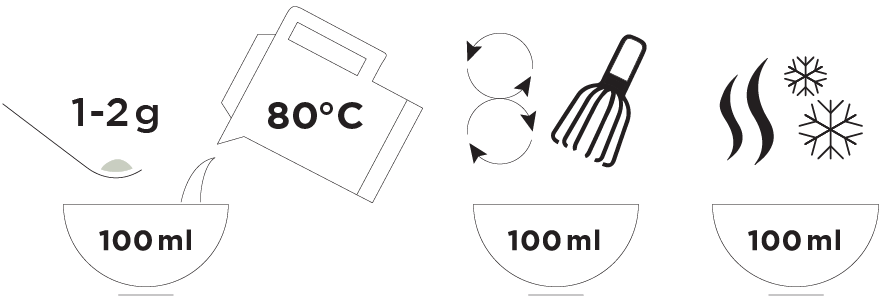
You can also make matcha with pure ice-cold water and drink it ‘on the rocks’. In fact, the possibilities with matcha are almost endless. You can add it to your favourite smoothie, shake or warm drink. You can use it to flavour ice-cream. You can make cakes with it or even add it to gastronomic recipes to give a subtle herbal twist!
*Soft water contains almost no calcium. Pure water contains no contamination or chemical substances. A water filter jug can purify tap water and remove its calcium content. This will improve the quality and flavour of your tea. As an alternative, use Spa Reine water, which contains almost no minerals and is very pure.
Why is matcha so healthy?
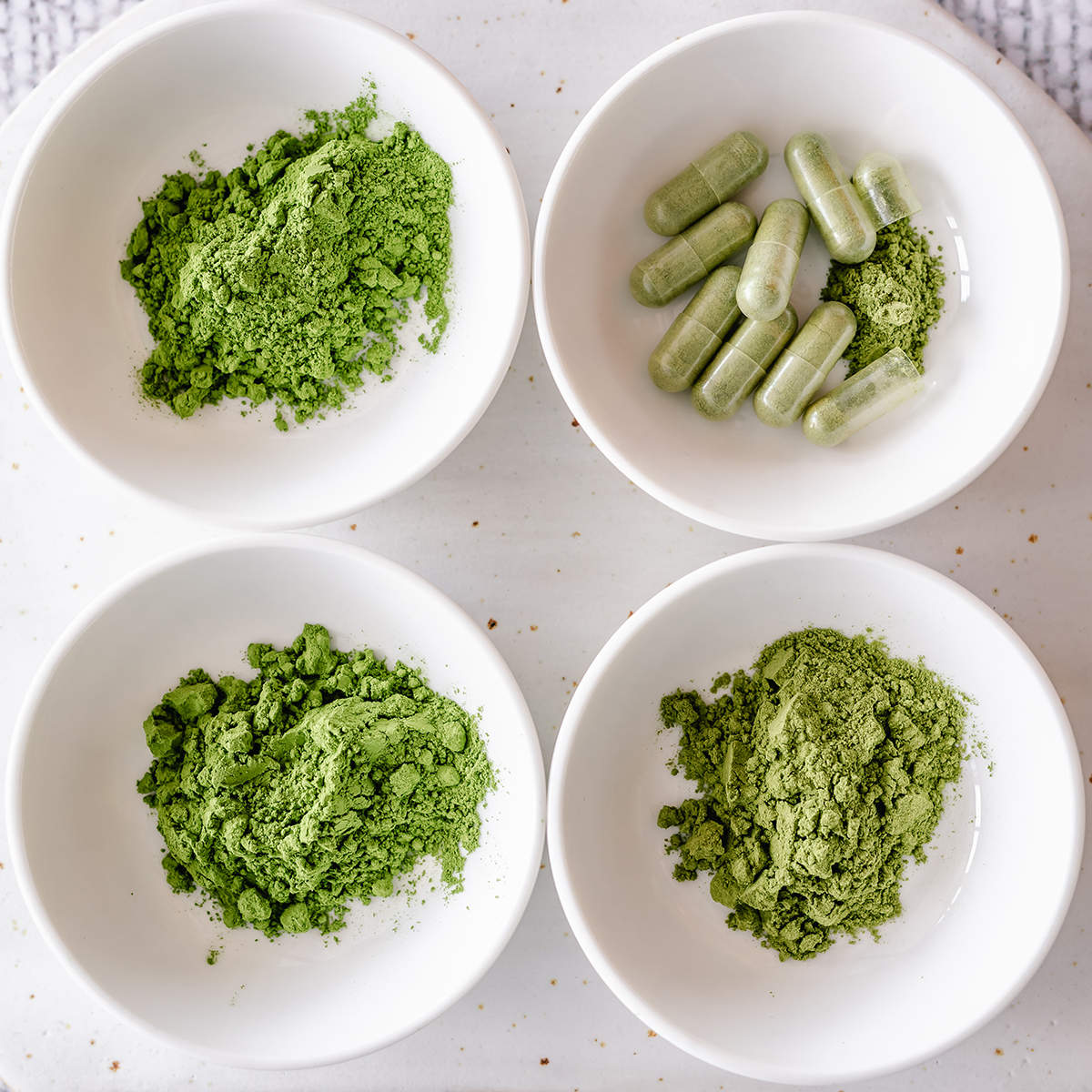
This green tea powder is highly rich in cell-protecting anti-oxidants (tannins, polyphenols like catechins and EGCG) and gives a long-lasting boost of energy (thanks to the theine), whilst at the same time also having a relaxing effect (thanks to the L-theanine).
In addition, matcha has high concentrations of vitamins (vitamins B, C and E), minerals, trace elements, chlorophyll and amino acids. It has been demonstrated that matcha further supports fat combustion, which makes it ideal as an aid to weight control. General levels of vitality and natural resistance are also improved by drinking matcha.
Moreover, matcha is a perfect alternative for coffee, because it makes you more alert and more energetic, but without making you nervous.
Recommended dose per day
1 to 3 cups of matcha, prepared as outlined above, is sufficient. Because matcha contains theine, it is advisable to drink it before four o’clock in the afternoon.
As an alternative, you can take Biotona Matcha caps, for which the recommended daily dose is 2 to 5 capsules per day. This is also equivalent to 1 to 3 cups of matcha.

